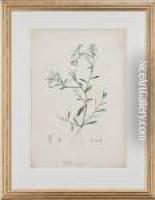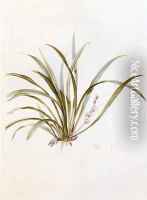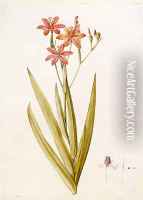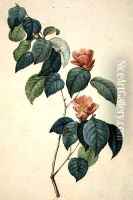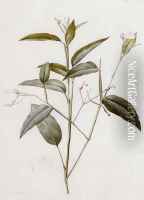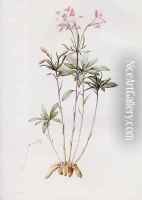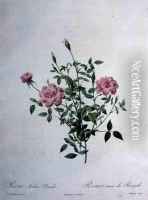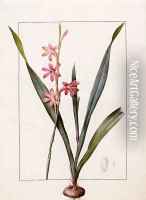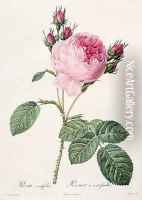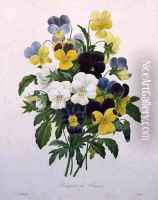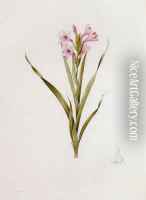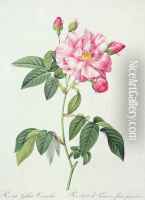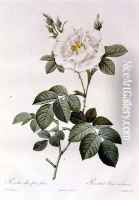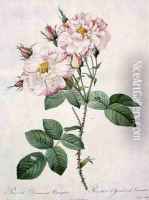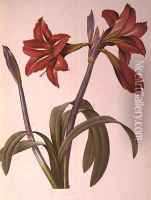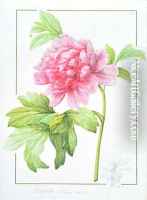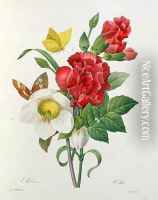Pierre-Joseph Redoute Paintings
Pierre-Joseph Redouté, born in Saint-Hubert, Belgium, in 1759, is renowned for his precise and detailed botanical illustrations, particularly of roses, lilies, and other flowers. Dubbed the 'Raphael of flowers', he brought an unprecedented level of detail and artistic elegance to botanical illustration, significantly influencing the field.
Redouté's journey into art began in his early years, inspired by his painter father. Moving to Paris in the late 18th century, he initially encountered financial difficulties but eventually gained recognition for his exceptional talent in botanical illustration. His breakthrough came when he started working at the Jardin des Plantes, Paris's main botanical garden, under the mentorship of the botanist Charles Louis L'Héritier. This opportunity allowed him to refine his skills and led to his involvement in producing illustrations for L'Héritier's scientific publications.
His reputation flourished under the patronage of Marie Antoinette, for whom he worked at the Petit Trianon, and later, despite the tumultuous times of the French Revolution, Redouté continued to receive support from the political classes, including Empress Josephine, Napoleon Bonaparte's wife. Josephine's passion for roses fueled Redouté's most prestigious works, including 'Les Roses' and 'Les Liliacées', which are considered masterpieces of botanical illustration. These collections showcased Redouté's skill in stipple engraving, a technique that allowed for delicate color gradations and detailed rendering of plant structures, making his work highly sought after both in France and internationally.
Aside from his botanical works, Redouté also contributed to scientific publications and was involved in educational initiatives, teaching flower painting to a number of students, including royal and noble patrons. His influence extended beyond his lifetime, affecting both the art of botanical illustration and the field of botany itself, thanks to his collaboration with leading scientists of his time.
Redouté's legacy is marked by his contribution to over 50 botanical works, including thousands of illustrations. His art not only captured the beauty of flowers with scientific accuracy but also reflected the societal and cultural interests in botany during the 18th and 19th centuries. Pierre-Joseph Redouté died in Paris in 1840, leaving behind a body of work that continues to be celebrated for its beauty and precision.

